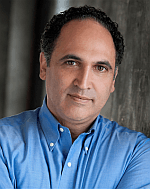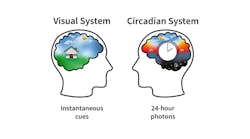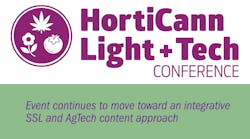Lighting and energy efficiency regulations and incentive programs are at the center of considerable activity and market transformation in the LED and solid-state lighting (SSL) space. Without rebates that rely on qualifications and product specifications, many SSL retrofits and new projects may never take place due to the considerable cost of undertaking such efforts. At Strategies in Light on Feb. 28, during Track 4: State of the Industry, panelists David Shiller (Lighting Solution Development), John Arthur Wilson (Lighting Design Lab), Juan Carlos Blacker (D+R International), and Kandice Cohen (Trane) will discuss recent and upcoming changes to the regulatory and incentive landscape. They are prepared to demonstrate exactly what kind of influence rebates and regulations have upon the adoption of LED lighting and the general state of business. Here Shiller answers a few key questions about programs such as the US Department of Energy’s (DOE’s) Lighting Facts, the qualified product lists (QPLs) organized and managed by the DesignLights Consortium (DLC), and how he views the potential impact on the LED buyer as well as the SSL industry. Join us at Strategies in Light in Las Vegas for the full presentation.
LEDs Magazine: Your background includes roles across the commercial lighting supply chain, industry associations, federal energy-efficiency programs, and consultancy. Based on your experience, what is lacking in rebate and incentive programs for commercial and residential lighting?
David Shiller: For commercial lighting incentives, the biggest problem my firm has in helping manufacturers leverage the rebates is the fact that the rebates go to the facility end users, a designated contractor, or to distributors in the case of “midstream rebates.” Many of the manufacturers we work with have a very hard time measuring the ROI [return on investment] of investing time and resources into commercial rebates, beyond getting DLC on their products. The largest manufacturers understand the investment is needed and have the resources, but smaller to mid-sized manufacturers have trouble justifying the marketing efforts to leverage commercial rebates. A few manufacturers are very good at it and accept the lack of measurable ROI.
If commercial rebate programs paid the rebates to the manufacturer the way big-box retail rebates worked, the manufacturers could directly measure the rebate dollars they capture, even if they immediately paid it back to participating electrical distributors. This would generate a lot more manufacturer active participation. There also needs to be some innovative thinking in commercial programs beyond the same old prescriptive and midstream models.
In addition, rebate programs generally don’t address new commercial construction as well as they address existing buildings. This is a big missed opportunity, because these are the projects with the most potential for both deep savings and timely application of more expensive emerging technologies. Three potential mechanisms available to utilities which would likely stimulate the market include:
- Align utility process and requirements around existing industry practices (i.e., don’t have a separate utility esoteric process that slows things down)
- Provide easy implementation for emerging technologies like NLC [networked lighting controls]/LLLC [] products (i.e., don’t have a custom incentive — simply offer $50 extra if it’s on the DLC NLC QPL)
- Expand existing trade-ally network outreach beyond traditional contractors and distributors. Ideas could include ESCOs [energy service companies], property management, specifiers, etc.)
For residential lighting incentives, the elephant in the room is uncertainty over the Federal Backstop for general service lamps (45-lm/W requirement that would remove most halogen lamps from the market). NEMA says the Backstop was not triggered by DOE and the sale of halogen lamps can continue after 2020, while NRDC and other efficiency advocates say the Backstop was triggered by DOE and halogen (<45 lm/W) will be eliminated from the market, shifting the vast majority of GSL sales to LED. DOE has said very little to resolve the question. Residential lighting rebates are expected to largely disappear around 2020 (next year) based on the assumption that the Backstop is triggered. This is an important issue to watch and residential rebates depend on whether the baseline is halogen or LED.
LEDs: In 2018, we reported that the US Department of Energy (DOE) Lighting Facts program was being shut down, and then later the DOE announced that D+R International would take over management of the program as a fee-for-listing model. Do you think Lighting Facts still plays a vital role in the marketplace? Why or why not?
DS: The biggest change is that LED Lighting Facts has gone from a DLC requirement to no longer required by DLC. The value proposition for a manufacturer to continue in LED Lighting Facts has become less clear. I’ve heard larger manufacturers with a large packaging investment in LED Lighting Facts continue to participate despite the new fees on manufacturers to participate. I’ve also heard that LED Lighting Facts is working with big-box retailers to explore if there is a benefit to retailers in requiring LED Lighting Facts of its vendors. If that happened, it would force big-box vendors to participate in LED Lighting Facts but probably not the larger industry. Until some entity requires LED Lighting Facts, industry participation will likely be reduced. If DLC or big-box retailers require it, it will see greater participation by manufacturers. Please note that the LED Lighting Facts Label, run by D+R, should not be confused with the FTC Lighting Facts Label that is a Federal labeling requirement on most DOE regulated lamp categories.
LEDs: In a similar vein, we try to stay up to date with the activities of the DesignLights Consortium, which recently contributed an article on expectations from the organization in regard to the advance of networked lighting — or smart lighting — controls and systems. In your opinion, how will regulations and qualification programs fit into the plans for smart buildings and/or smart cities?
DS: The DLC already has implemented the Networked Lighting Controls specification and QPL, which enables manufacturers’ control systems to qualify for a growing number of utility incentives. This has the effect of reducing end user cost and gradually standardizing the minimum control features across various manufacturers.
The largest regulatory driver for lighting controls that I see is the Non-Residential Title 24 regulations in California. Title 24 requires new commercial buildings in California to meet minimum control requirements through a variety of means. I would expect other states and someday the federal government may look to controls as a way to save additional energy once LED is the baseline. The challenge is that sophisticated controls are not cost effective based on energy savings, once LED lighting is installed or specified. It is difficult for most regulators to ignore this lack of cost effectiveness. The California Energy Commission has other priorities.







